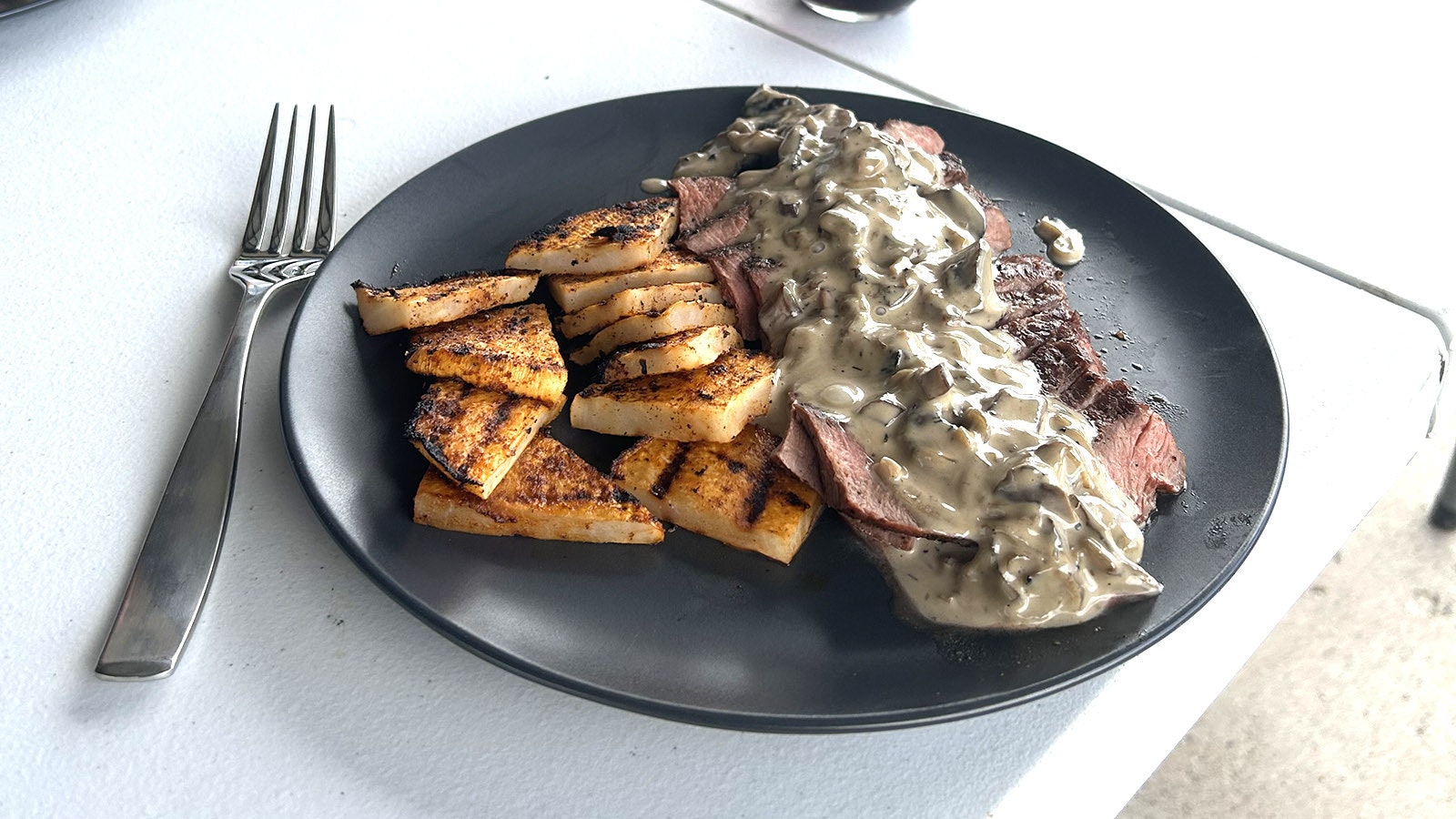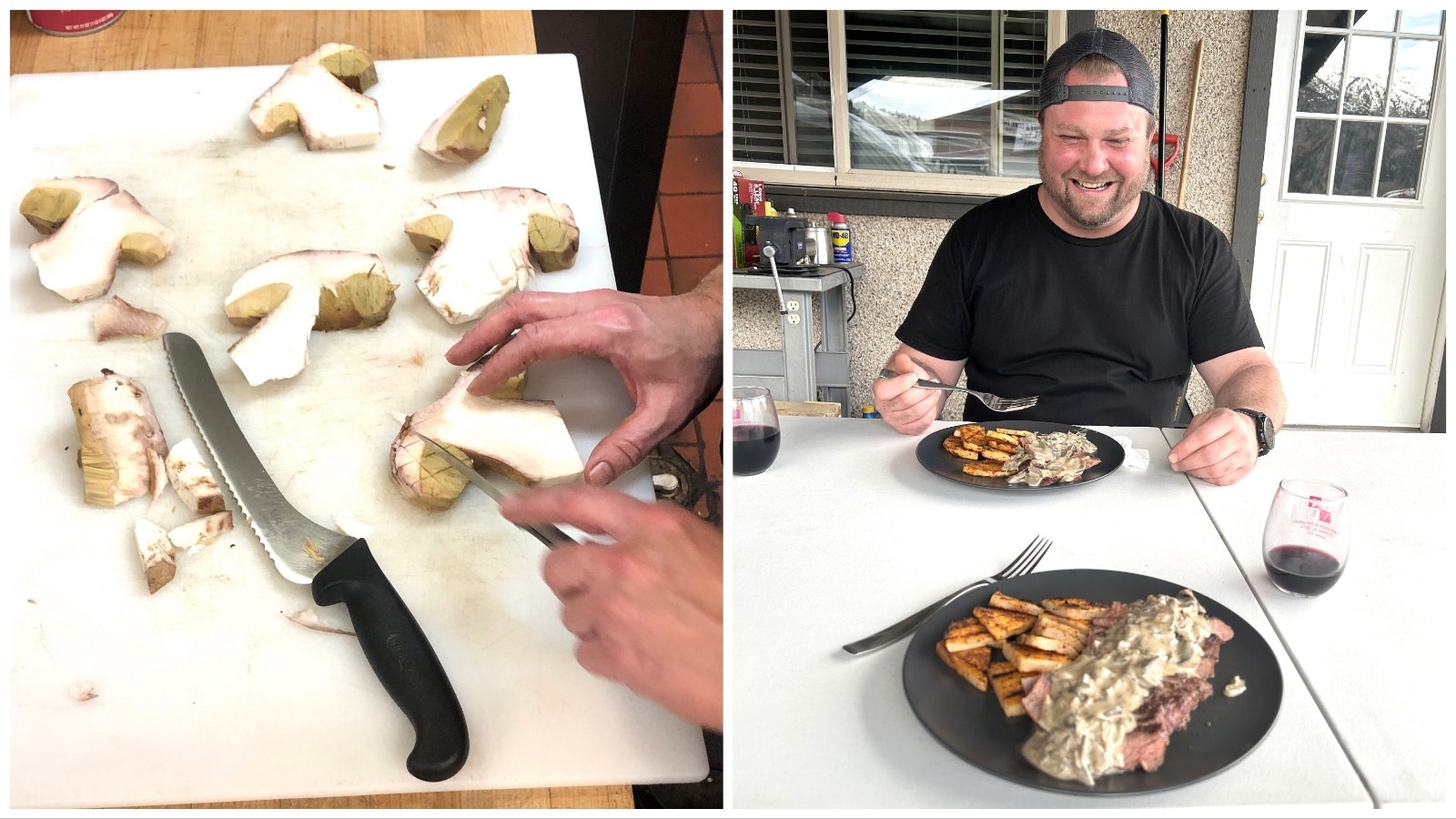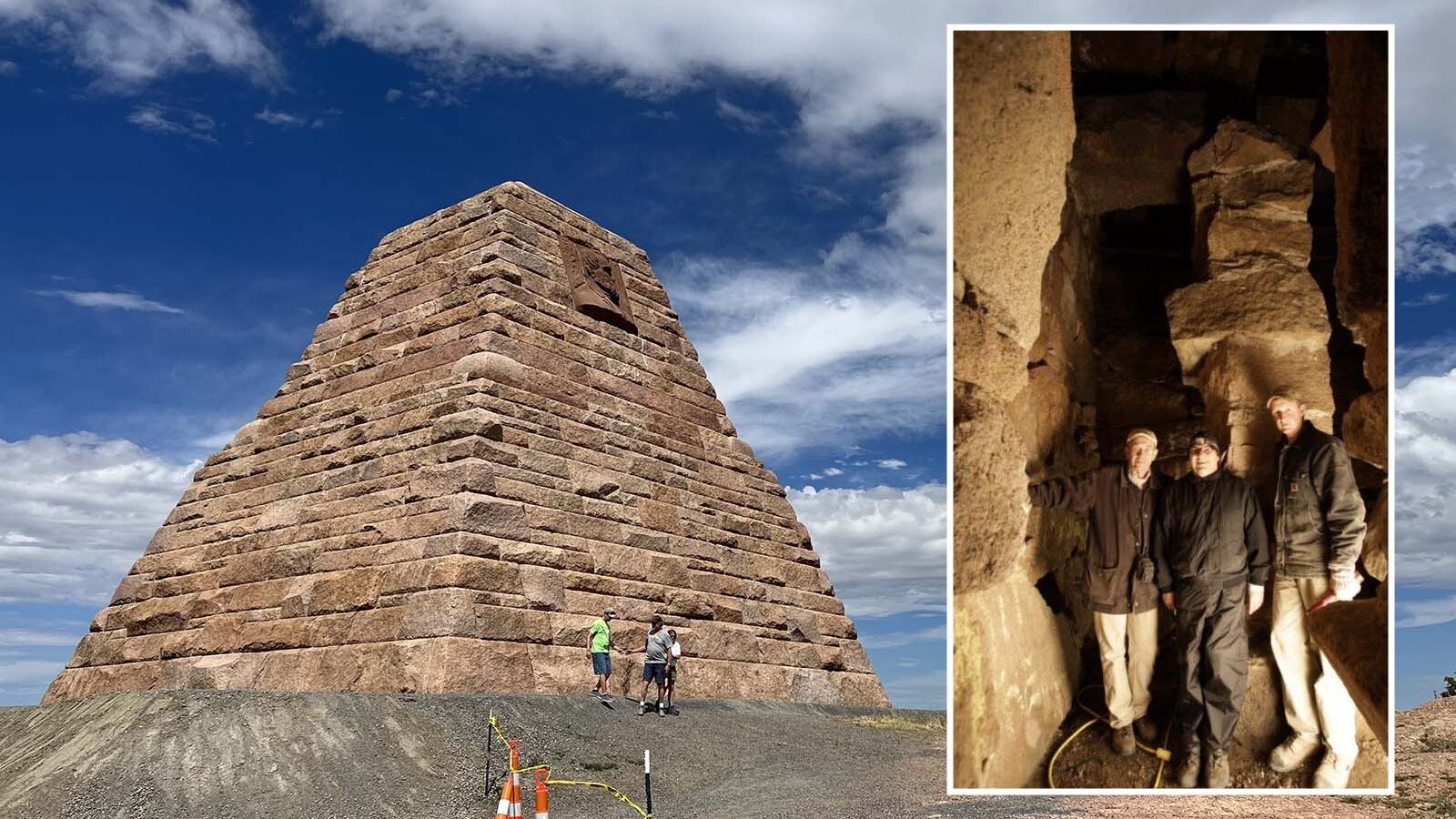Wild mushrooms are an underutilized Wyoming resource. They add forest flavor to food and provide a sense of accomplishment to those who forage for them.
Ancient Romans regarded mushrooms as “food of the gods.” Hikers and mounted travelers in western Wyoming pass by pounds of mushrooms nearly every summer day.
Some folks come across a mushroom and see delicious food, others never consider it something to eat.
In the hands of a capable chef, a wild mushroom sauce done right will make you wish you had a bigger steak. Chef Preston Yoke of Alpine shares his recipe for mushroom wine sauce at the end of this article.

Shrooms 101
Proper mushroom identification is critical, but not difficult.
The old axiom that “there are old mushroom pickers and bold mushroom pickers, but no old, bold mushroom pickers” can’t be overstated.
Tara Geiger is plant scientist and program manager for CARE, a Washington, D.C.-based international humanitarian organization, who specializes in regenerative agriculture and sustainable farming.
As a graduate student at the University of Wyoming Plant Sciences Department, Geiger produced a video for YouTube titled “The Top 5 Edible Mushrooms in Wyoming.”
Geiger lists wood ears, oysters, porcinis, chanterelles and morels as her top five in the Laramie area. The video provides complete details on how to identify and where to look for wild mushrooms.
In her field research, Geiger said she had the most luck finding morels in the Snowy Range Mountains around Laramie and that she’s yet to find a porcini, also known as king bolete.
In northwest Wyoming, king boletes and hawk’s wing mushrooms are common along trails, river bottoms, lakes and in dry stream channels. Boletes are found on partial- to full-sun exposures while hawk’s wings like full shade.
Smaller is better is another rule, along with always cook thoroughly and forage after rainstorms.
The Details
For a bolete, pick the mushroom and tip it over. It should be heavy and the underside spongy with no gills. Use a knife to trim the dirt off the stem and then whittle it down. Look for worm trails, and discard if bug-ridden.
A hawk’s wing mushroom looks like a black-and-white mottled bird wing. It’s known as a good mushroom for beginners because nothing else on the forest floor looks quite like it.
Pick it and tip it over, and the underside will be covered with hairlike soft gills.
Morels are a spring mushroom that look like little Christmas trees. They are a popular mushroom and are harvested commercially in the Pacific Northwest. They are hollow and range in color from black to blonde. They are found in burned areas.
Chanterelle is another fairly common mushroom found across the U.S. They are generally orange and have veins that run the length of the stem. They smell fruity like apricots. Geiger’s video provides a detailed description.
You’ve Gathered A Basketful — Now What?
Upon returning home with a haul of wild mushrooms, they need to be cleaned with a small brush and then sliced for either frying or drying.
Dry in the sun in a single layer for about two days. If they get rained on they’re ruined. Other methods include a food dehydrator or placing them in a sunny window for a couple of days to preserve them.
It’s Primal
There’s a meaningful satisfaction that comes from putting a meal on the table with game you’ve hunted and food you’ve grown or foraged.
Foraging and hunting share some similarities. It’s hiking in the forest with the gear you need to get you through a day. The big difference is instead of focusing downrange, mushrooms require focus on the forest duff at your feet.
Wild mushrooms have a mutualistic relationship with certain trees. The result is the fungi combine their mycelium with tree roots making it easier for trees to get nutrients and moisture from the soil. The fungi get access to sugars from the trees.
The Payoff
The payoff for all of this effort comes in the kitchen.
Wyoming chef Preston Yoke has a killer recipe for flatiron steak with grilled turnips and mushroom wine sauce. Yoke is the owner of Mile High Cajun, a food truck open this summer at Melvin Brewing in Alpine, Wyoming.
· First, rehydrate hawk’s wing mushrooms in hot water. In an hour, the au jus is rich and dark. Pull the mushrooms out and trim. Save the au jus.
· As the steaks come to room temperature, the turnips are marinated in Cajun spice and a neutral oil.
· For the sauce, sauté shallots and garlic then add mushrooms and butter. Deglaze with sherry and add mushroom au jus and fresh thyme. Reduce and add heavy cream, salt and pepper. Reduce, add nutmeg and serve.
“Nutmeg adds a nice background note that plays well with the mushrooms,” Yoke said.
Regarding the reduction of the sauce, Yoke advises to look at the bubbles rising up in the sauce. When they’re about the size of a dime, the sauce is cooking at the right temperature and it won’t burn.
Other uses for dehydrated mushrooms include using the au jus to make rice, risotto and sauces, add it to salads, soups and stews or sauté and serve on their own.
“All That the Rain Promises and More” by David Arora is a solid field guide on wild mushroom foraging in the Pacific Northwest.

Fast Facts
· People who hunt and gather mushrooms are called mycophagists.
· The largest living organism on Earth is a 3.5-mile honey mushroom in Oregon, as fungus also grows and expands underground, meaning what may appear to be individual plants sticking up out of the ground may have sprouted from the same source.
· Some shrooms can glow in the dark and are sometimes called “electric mushrooms.”
· Mushrooms are a good source of vitamin D.
· The most expensive mushroom on the planet is the Yartsa Gunbu, aka caterpillar fungus. It’s a spore that actually kills a host caterpillar, then grows a mushroom out of its head. It costs about $2,000 an ounce.
· If you find button, portobello or cremini mushrooms, you’ve found the same shroom. They’re all the same species of fungus harvested at different stages of growth.
· The death cap mushroom lives up to its name. These look like some edible species, but are bad news. In some cases, people can die within 72 hours of eating one.
Source: Growcycle.com
Learn more:








